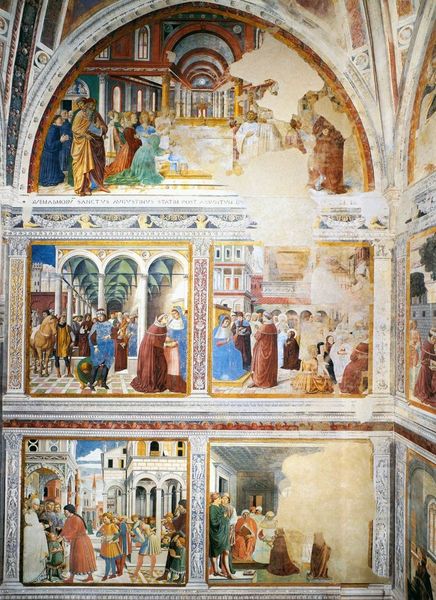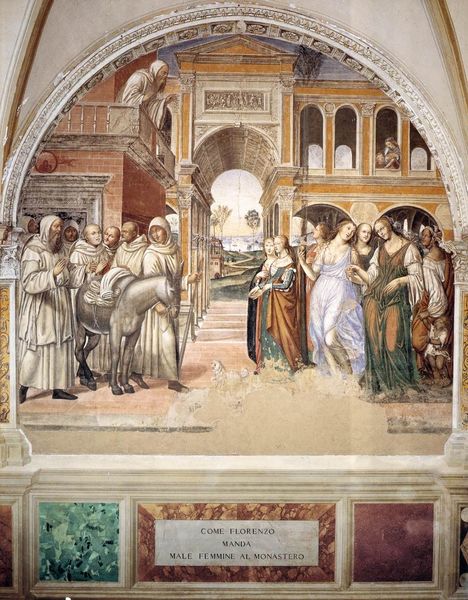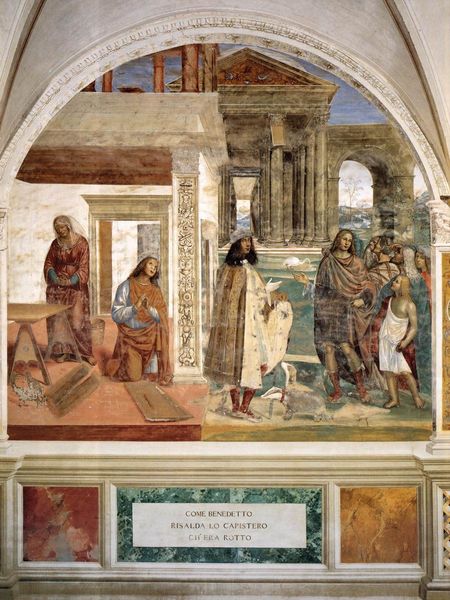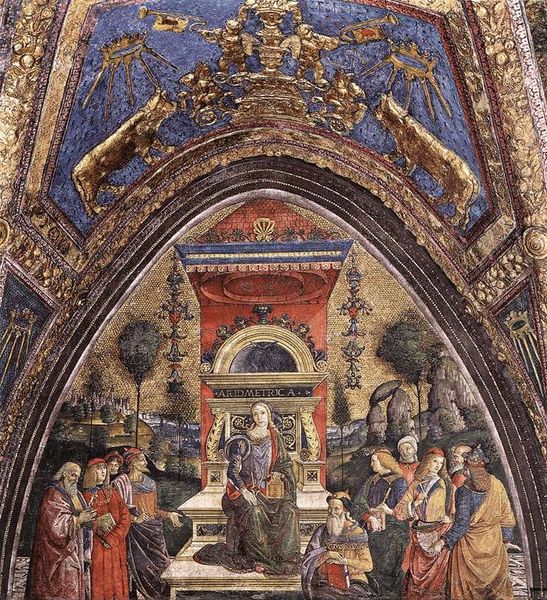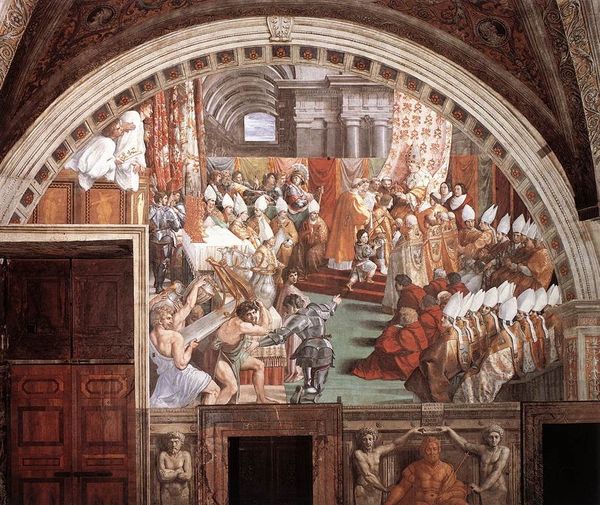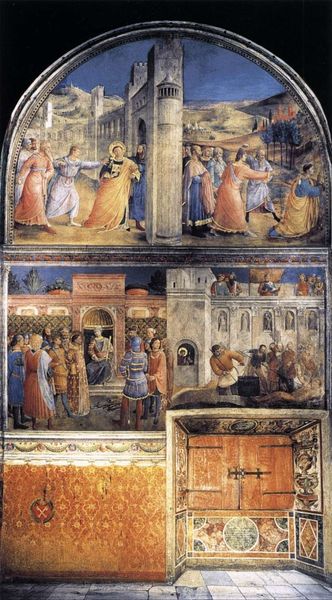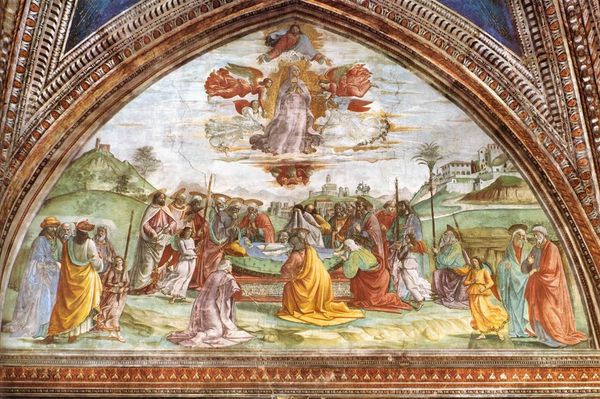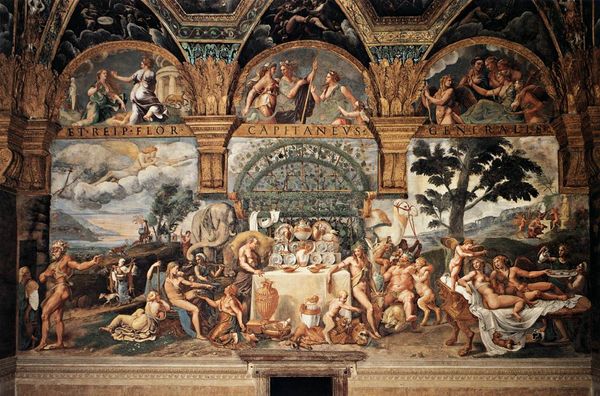
View of the Right Hand Wall of the Chapel 1465
0:00
0:00
benozzogozzoli
Sant'Agostino Church, San Gimignano, Italy
painting, fresco
#
medieval
#
painting
#
sculpture
#
architectural photography
#
holy-places
#
historic architecture
#
fresco
#
traditional architecture
#
christianity
#
history-painting
#
italian-renaissance
Copyright: Public domain
Curator: Standing before us is Benozzo Gozzoli's fresco cycle on the right-hand wall of the Sant'Agostino Chapel in San Gimignano, dating to about 1465. Editor: My first thought is how clearly it depicts hierarchy. The tiers of images, figures, and architectural elements...they establish a very distinct visual order. It's a feast for the eyes, yet restrained in its palette. Curator: Indeed. Gozzoli was working within a very specific framework, commissioned by the Augustinian friars. The visual program here isn't arbitrary; it's deeply tied to the Order’s identity and its place in fifteenth-century Italy. These scenes visually reinforce their theological stances and celebrate their intellectual life. Editor: I am drawn to how consistently light seems to emanate from certain figures or key symbolic gestures. It highlights them while reinforcing a sense of heavenly authorization, perhaps even implying divine inspiration, particularly in scenes involving the act of teaching or studying scripture. Curator: Precisely. And what's particularly interesting is the public role of the Augustinians at this time. They weren't cloistered away; they were actively engaged in civic life. This chapel, though part of a religious complex, served as a very visible display of their power and influence within San Gimignano. Editor: We cannot ignore the prevalence of angels. Each angel throughout these frescos, and even the dove above the Death of Saint Augustine, represent messages from a divine presence. It subtly ties all of the earthly activities to Heaven itself. Curator: The chapel’s frescoes became a crucial method for projecting the Augustinian image in the town, becoming deeply ingrained in local politics. Viewing art was not merely aesthetic consumption. The frescoes' intent was explicitly pedagogical, aimed at both educating and inspiring faith in those who entered the space. Editor: A cycle like this allows a viewer to read and interpret across the centuries. Each character, item, or expression has a meaning rooted in its own time, but also layered with so many subsequent interpretations. The Augustinians here sought permanence and universality through the use of symbolic conventions. Curator: Exactly, it shows us how visual representations actively shape and define the Augustinians, helping to underscore the significance of their socio-political positioning within both San Gimignano, and beyond. Editor: To engage with this piece, is to really peel back the cultural layers within history itself. It's an experience both intellectually satisfying and visually pleasing.
Comments
No comments
Be the first to comment and join the conversation on the ultimate creative platform.
